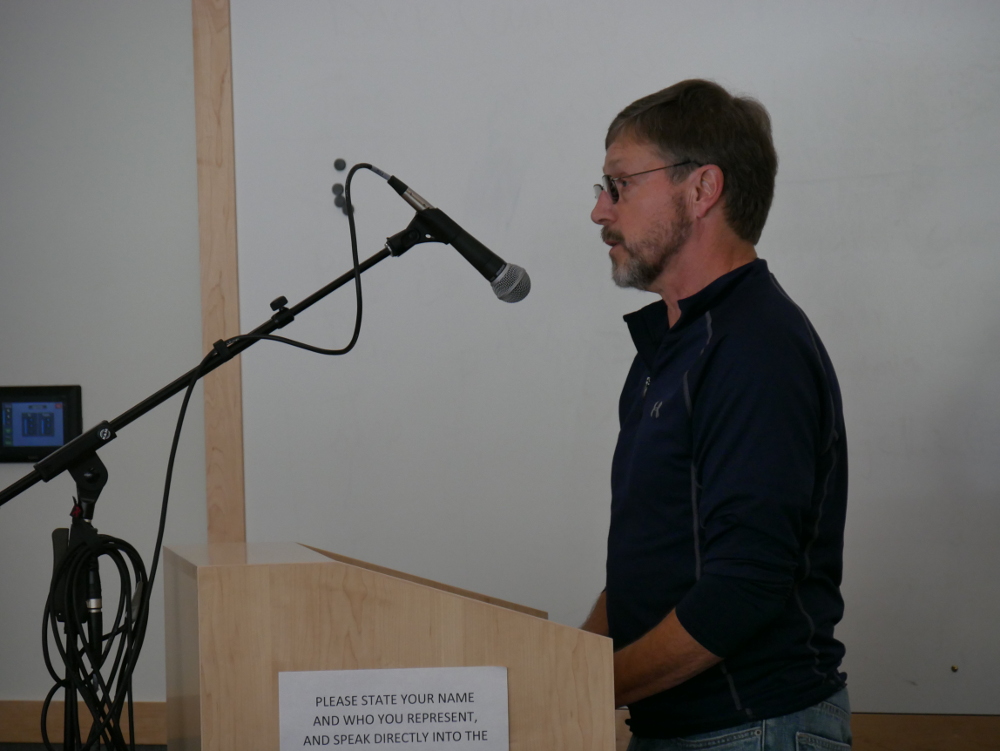
Petersburg’s borough Assembly Monday passed a resolution seeking enforceable protections against pollution from mines in British Columbia on rivers that flow into Southeast Alaska.
Meanwhile, Alaska’s lieutenant governor said he is raising the issue with both provincial and federal governments.
The group Salmon Beyond Borders is asking municipal governments in Southeast Alaska this year to pass the resolution seeking the involvement of U.S. and Canadian federal governments under an international treaty on boundary waters between the two countries.
Assemblies in Ketchikan, Sitka and Wrangell have, while Juneau is reconsidering.
Petersburg’s Assembly passed a similar resolution in 2015 and voted to send a letter seeking federal involvement last year.
The resolution up for consideration this fall is an updated version.
Southeast tribes, fishing organizations and environmental groups are concerned with mine pollution near rivers that flow out of British Columbia into Southeast Alaska, like the Stikine, Taku and Unuk, as well as the Nass further south.
Salmon Beyond Borders’ Brian Lynch, a Petersburg resident and retired Alaska Department of Fish and Game biologist, called it both an environmental and economic issue.
“Something happens up there, we could be directly harmed,” he said. “It could cause great disruption in salmon fishing, also crab fishing in the Stikine flats and it has the potential to even affect fisheries across the Gulf and into the Bering Sea. It could be much more horrendous than just its effect on salmon.”
A report commissioned by Salmon Beyond Borders last year found that commercial and sport fishing activity along with tourism dollars from the waterways are worth a combined $48 million a year in economic activity including the paychecks for 400 people in Southeast Alaska.
The group wants to ensure that income is not threatened by precious metals mines already operating or being explored across the border.
Lynch also addressed a statement of cooperation the Alaska signed with the British Columbia government last year.
“The SOC was a good step forward but cannot provide for enforceable regulations or financial assurances in case of contamination or mining disaster,” Lynch said. “Only the federal government has that authority under the Boundary Waters Treaty.”
That treaty is from 1909. It’s implemented by an International Joint Commission, which “studies and recommends solutions to transboundary issues when asked to do so by the national governments.”
Petersburg’s Assembly passed the resolution unanimously, only adding language asking for baseline water quality monitoring on the waterways, a request from Assembly member Bob Lynn.
“We can talk about all kinds of enforceable protections and so forth but if we don’t have a baseline from which to be able to argue from or go to court with, we’ve not gained anything,” Lynn said.
Lt. Gov. Byron Mallott was in Petersburg in late September and said he plans to meet with officials in the new B.C. provincial government in October or November.
“Commissioner Larry Hartig of the Department of Environmental Conservation will be accompanying me,” Mallott said. “It will be our first visit with this new government. I’ve recently had the opportunity to be in D.C. and meet with the Canadian government officials there as well as our EPA and state department and emphasized the need for both federal and local action in maintaining both the habitat and the pristine waters of these transboundary rivers.”
Mallott said he’s tentatively planning a trip to Ottawa along with U.S. Sen. Dan Sullivan to discuss mining concerns and other topics with the Canadian federal government.
The lieutenant governor says he’s raised several specific concerns with the federal governments of both the U.S. and Canada, including baseline water quality monitoring and an existing polluting mine.
“We’ve asked that the Tulsequah Chief mine which has been emitting acid mine drainage for almost half a century that that be dealt with once and for all,” Mallot said. “It is not a major polluter by any stretch but it is essentially the poster child of British Columbia mining management and if you can’t deal with that what can you deal with kind of a circumstance. We are also talking with our federal government and the Canadian federal government about how do we deal with catastrophic failure?”
The Tulsequah Chief an abandoned precious metals mine 40 miles northeast of Juneau on a tributary of the Taku River. A coalition of 16 tribal governments in Southeast Alaska this summer said the BC government could not be relied on to clean up that mine and asked for U.S. and Canadian federal governments to do it instead. As for catastrophic failure, environmental and fishing groups are concerned about another disaster like the 2014 tailings dam collapse at Mount Polley in central BC in 2014.
With help from AD